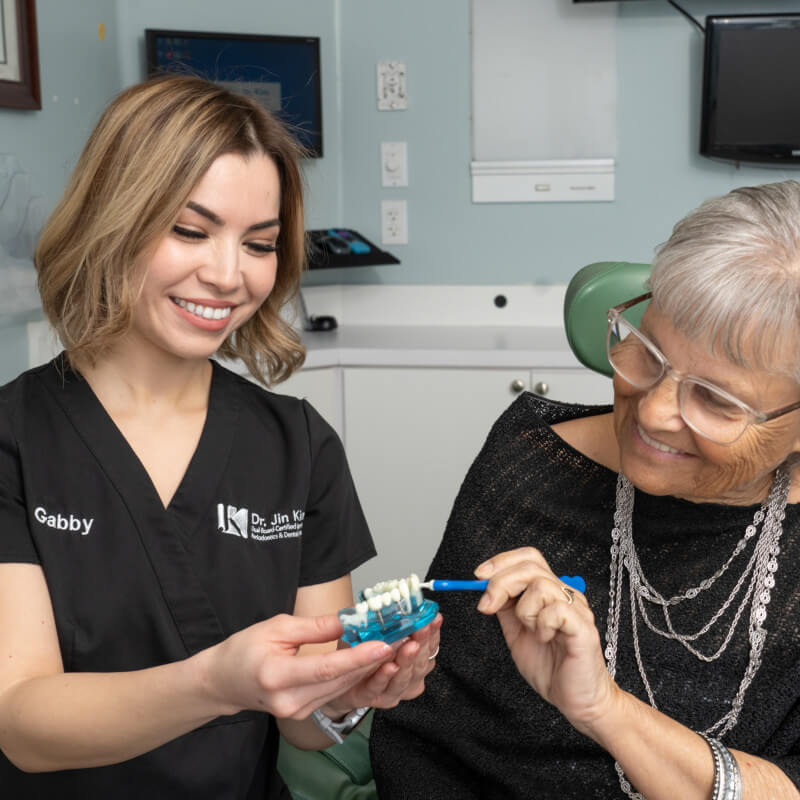(909) 860-9222
Diamond Bar Office
(714) 898-8757
Garden Grove Office
Diamond Bar Office
Garden Grove Office
There are many stages of gum disease. Periodontal disease is present in 48% of adults, and 9% of these have severe periodontitis.
Determining the severity of your periodontal disease is an important step in the diagnosis and treatment process, as procedures that work for mild periodontitis differ from those that are effective against more severe cases.
Dr. Kim offers osseous surgery and scaling and root planing treatments to restore your oral health if you have gum disease. Here is what you need to know about these two procedures and how they can renew your smile.
One of the symptoms of periodontal disease is pockets of tartar and bacteria between your gum tissue and the surfaces of your teeth. Osseous surgery helps remove the bacteria and repair any damaged bone.
Dr. Kim may recommend osseous surgery for patients with advanced periodontal disease who have experienced bone loss or bone damage as a result of bacteria and diseased tissue. If left untreated, this advanced gum disease could lead to tooth loss.
Osseous surgery is also known as flap surgery and is performed under local anesthesia. During the procedure, Dr. Kim creates a flap of gum tissue around the area that needs to be treated. He lifts the flap to remove bacteria and obtain direct access to the bone. This allows him to remove or reshape any damaged bone beneath the diseased gum tissue, promoting healthy healing.
Most patients recover within a few days of their procedure. Follow Dr. Kim’s recommendations for pain relievers and dietary guidelines as you are recovering from your osseous surgery.

During scaling and root planing therapy, Dr. Kim removes plaque and tartar from pockets in your gum line and smooths your teeth roots to help your gums reattach.
If you are showing signs of early to moderate stages of gum disease, you may be a good candidate for scaling and root planing therapy as part of your treatment plan. It helps keep gum disease from advancing and is often recommended as routine maintenance for patients with periodontitis.
Dr. Kim performs scaling and root planing therapy under local anesthesia so you feel comfortable while he gets below the gum line to remove bacteria and calculus buildup.
He removes all of the plaque and tartar above and below the gum line, cleaning all the way to the bottom of the pockets between your gums and teeth using an ultrasonic tool. By removing this calculus buildup, he also removes the bacteria it harbors.
Next, he smooths out the roots of your teeth to help your gums reattach.
After this deep cleaning, you may experience pain and sensitivity for a few days, but recovery is usually relatively quick. Dr. Kim may recommend a prescription-strength antimicrobial oral rinse after treatment.